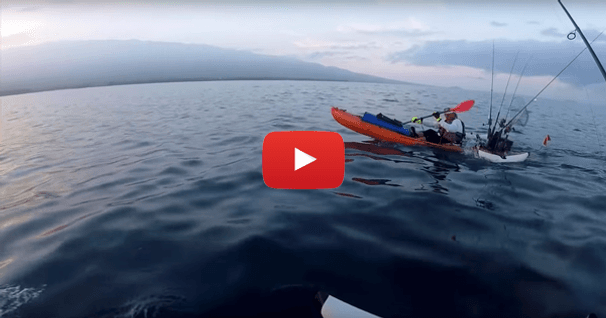Classic T-Rescue with Variations
Let's assume you've practiced your wet exits until you are comfortable with them. Now it's time to get back into your kayak, preferably a dry one. The T-rescue is an assisted rescue using the aid of another paddler in their boat.
So, you're in the water holding onto your paddle and your capsized boat. Here's what happens next:
- Your cheerful paddling partner, being well versed in this technique, paddles up and asks if you're okay.
- They coast to your bow until their boat is perpendicular to yours.
- The rescuer grabs your bow and lifts it onto their lap, pulling it across their boat until your front hatch is just about in the rescuer's lap. This causes the water trapped in your boat to fall downhill and out the upside down cockpit. At no time during this process should the swimmer (you) let go of your boat.
- The rescuer then rights your boat and slides it back into the water parallel to their boat but going in the opposite direction. The two cockpits should be about even with one another, bridged by both paddles and the rescuer is leaning over the two paddles to stabilize your boat by holding onto your cockpit coaming on both sides. They have their torso fully weighted onto your boat.
- You are positioned opposite of the rescuer with your hands on your cockpit coaming. You launch yourself across your cockpit by kicking your legs and pulling with your arms simultaneously.
- At this point you should be able to crawl along on your stomach toward your stern by pushing with your knee in your cockpit. Stay as low as you can on your back deck and continue working your way back until you can stuff both feet back into your cockpit.
- Work your way backward down into your cockpit and turn back over once your hips are over your seat.
- During all this your rescuer has never let go of your cockpit or lessened their stabilizing influence on your boat. In fact, they still have a hold of your boat now as you pump or sponge out any remaining water and work to straighten out the skirt that is now corkscrewed around your waist.
- Once you've got your skirt on and your rescuer is sure that you know your own name, and then you're ready to go about your business as a paddler again.
Variations on a the classic theme:
One of my favorite variations comes up at
- #3) Your kayak is perpendicular to the rescuer's boat and you right the boat in the water by reaching under and pulling the opposite side of the cockpit coaming toward you. This makes it easier for the rescuer to pull the bow up onto their kayak because the bottom of the bow makes a much better ramp than the top. The rescuer must now roll the boat over in their lap to empty the water out, right it again and slide it back in the water. It seems like a bit of extra effort, but it is easier and safer for the rescue boat. Next variation comes at
#5) Instead of launching yourself up over the boats to re-enter crawling on your stomach, you hang between the two kayaks, one arm over your rescuer's boat, other over yours behind your cockpit facing the rescuer. In this position, you can lie on your back, tuck your knees to your chest and put both feet right into your cockpit. You can use your arms to lift your torso as your rescuer pulls the two boats together under you. This is a very fast rescue that gets you into an upright and seated position right away. The downside is that is doesn't work very well for real large people and it requires a fair bit of strength from the rescuer.
The key to assisted rescues is to practice and have a number of variations in your repertoire to handle a number of situations with different size paddlers. Practice with the people you paddle with. Practice with new paddlers of different sizes; practice before you need to use these skills for real.
Michael Gray writes from the beautiful island of Roatan where rescue practice is also a good excuse to go snorkeling. Check out Uncommon Adventures' Bay Islands kayak tours on the web at www.uncommonadv.com or write info@uncommonadv.com.
Related Articles
In this video, Chad is kayak fishing in the river in Happy Valley, Pennsylvania. He shares important…
Watch as a pair of kayak anglers experiences a sinking kayak several miles from shore. Thank goodness…
Whether you paddle with a group or you enjoy paddling solo, there may come a time where you would need…
The traditional All In Recovery takes some time and a good deal of orchestration and manipulation to…



